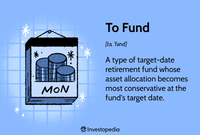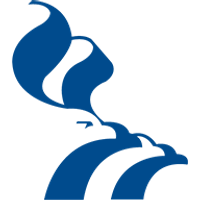Explore web search results related to this domain and discover relevant information.
These funds aren't for everyone, however. Their expenses tend to be higher than index funds and other passive investments. Their holdings may duplicate other parts of an individual's portfolio, and some of them may invest too conservatively for long-term investors.
A to-fund is a type of target-date retirement fund whose asset allocation becomes most conservative at the fund's target date.To-Funds vs.A to-fund is a target-date retirement fund that gradually shifts its asset allocation from aggressive to conservative as it approaches its target date.A to-fund is a type of target-date retirement fund whose asset allocation begins more aggressive and becomes most conservative at the fund’s target date.
:max_bytes(150000):strip_icc()/business_building_153697270-5bfc2b9846e0fb0083c07d69.jpg)
View all Vanguard mutual funds · Use our tool to see historical market performance · Explore the tool · A mutual fund is a collection of investors' money that fund managers use to invest in stocks, bonds, and other securities. Our average expense ratio across our mutual funds and ETFs is ...
View all Vanguard mutual funds · Use our tool to see historical market performance · Explore the tool · A mutual fund is a collection of investors' money that fund managers use to invest in stocks, bonds, and other securities. Our average expense ratio across our mutual funds and ETFs is 84% lower than the industry average.1 Learn more about our cost advantage ·Start with your savings goals to get an idea of how aggressive you want your investments to be based on your risk tolerance and how long you'd like your money to be invested. Then determine the best asset allocation for your goals, and select a mutual fund to help build your diversified portfolio.Build your legacy with high-quality, low-cost mutual funds that fit your needs.One mutual fund can invest in hundreds—sometimes thousands—of individual securities at once.
These funds aren't for everyone, however. Their expenses tend to be higher than index funds and other passive investments. Their holdings may duplicate other parts of an individual's portfolio, and some of them may invest too conservatively for long-term investors.
A "to" fund is a type of target-date retirement fund whose asset allocation becomes most conservative at the fund's target date.A "to" fund is a type of target-date fund whose asset allocation becomes most conservative at the fund’s target date. A target-date fund is a mutual fund or an exchange-traded fund (ETF) that is structured in such a way that its assets grow in a way that is optimized for a specific timeframe.To funds can be contrasted with "through" funds, another type of target-date fund; through funds are designed to help investors through retirement, with the goal of accumulating wealth long after the retirement (target) date.To Fund vs.
:max_bytes(150000):strip_icc()/to-fund-definition-4684020-final-1-e8024c34352d44829dfbc1f0c58d039b.png)

Your emergency fund might be too big if you have high risk tolerance, social support, and adaptability. In fact you might not need it at all!
Overwhelmingly, those people needed emergency funds and often didn’t have them. Now we have a healthy readership of self-identified personal finance nerds… and we’re seeing the opposite problem! These people took the “build an emergency fund” step and ran with it.I was very lucky, and none of those financial hardships ever came to pass; but this meant my emergency fund sat in my savings account, slowly depreciating. Meanwhile, I was toying with the idea of closing my credit card altogether—after all, I never used it! I was too scared of debt to touch the damn thing.At that time, each one of those things was a good reason to keep a strong emergency fund in a savings account. My life is more steady now. We actually have room for error. So novel to know I can hit a rough patch and actually bounce back from it! It would be extremely cool for that to be everyone’s experience, but I know I’ve already asked Santa for too much this year…If your life is pretty stable you’re living well within your means, do the math to see if shrinking or phasing out your emergency fund makes sense for you too. In my observation, large emergency funds are almost always an expression of financial anxiety. Which is utterly understandable!
Learn about the dangers of keeping too much in savings, how large your emergency fund should be and what to do if your emergency fund is too big.
Are you wondering "is my emergency fund too big?" While feeling extra financially secure has clear merits, you could actually be taking a loss if you're overfunding your emergency fund and neglecting other financial goals.While having a flush emergency fund is a great source of security, overfunding your savings account can be an overall loss for your finances. Here's why: There's an opportunity cost. Even if you're keeping your money in a high-yield savings account, the returns you'll make on your savings are typically low compared with the returns you could be seeing if you took on some risk.While there isn't a right answer to the question of how much you should save in your emergency fund, you want to make sure you're saving enough to feel fully secure in the event of a loss of income or large expense. On the other hand, there can be such a thing as too much financial security if that means not allowing for any risk in your saving and investing.Your emergency fund could be too big if it exceeds three to six months’ worth of expenses. That said, everyone has a different financial picture.

Fidelity offers over 10,000 mutual funds from dozens of different mutual fund companies and can help you find the right ones for virtually any investment need.
Mutual Funds · Crypto · Direct Indexing · Fixed Income, Bonds & CDs · ETFs · Options · Sustainable Investing · Managed Accounts · 529 College Savings · Health Savings Accounts · Annuities · Life Insurance · Why Fidelity · The Fidelity Advantage · Planning & Advice · Trading · Straightforward Pricing · Insights & Tools ·

An emergency fund is just what it sounds like—an amount of money set aside, usually in an account, to cover unexpected expenses or a loss in income. For example, many people keep their emergency savings in a savings account at a local bank or credit union or in a money market account, which might earn you a bit more interest. It’s important to keep the money where it will be available when you need it, but not too ...
An emergency fund is just what it sounds like—an amount of money set aside, usually in an account, to cover unexpected expenses or a loss in income. For example, many people keep their emergency savings in a savings account at a local bank or credit union or in a money market account, which might earn you a bit more interest. It’s important to keep the money where it will be available when you need it, but not too easily available.Learn how to prepare for unexpected expenses and protect your financial future.Tools and resources to find and use economic data worldwide.Recent data show that many Americans are not prepared for this type of setback. The 2024 SHED survey found that 55 percent of respondents said they had set aside money for 3 months of expenses in an emergency savings fund, with older people generally more prepared than younger people, as shown in Table 2 below.

These funds aren't for everyone, however. Their expenses tend to be higher than index funds and other passive investments. Their holdings may duplicate other parts of an individual's portfolio, and some of them may invest too conservatively for long-term investors.
A "to" fund is a type of target-date retirement fund whose asset allocation becomes most conservative at the fund's target date.A "to" fund is a type of target-date fund whose asset allocation becomes most conservative at the fund’s target date. A target-date fund is a mutual fund or an exchange-traded fund (ETF) that is structured in such a way that its assets grow in a way that is optimized for a specific timeframe.To funds can be contrasted with "through" funds, another type of target-date fund; through funds are designed to help investors through retirement, with the goal of accumulating wealth long after the retirement (target) date.To Fund vs.
A "fund of funds" (FOF) is an investment strategy of holding a portfolio of other investment funds rather than investing directly in stocks, bonds or other securities. This type of investing is often referred to as multi-manager investment. A fund of funds may be "fettered", meaning that it ...
These strategic and structural issues have caused fund-of-funds to become less and less popular. Nonetheless, fund-for-funds remain important in particular asset classes, including venture capital and for particular investors in order for them to be able to diversify their too low or too high level of assets under management appropriately.A "fund of funds" (FOF) is an investment strategy of holding a portfolio of other investment funds rather than investing directly in stocks, bonds or other securities. This type of investing is often referred to as multi-manager investment. A fund of funds may be "fettered", meaning that it ...There are different types of FOF, each investing in a different type of collective investment scheme (typically one type per FOF), for example a mutual fund FOF, a hedge fund FOF, a private-equity FOF, or an investment trust FOF. The original Fund of Funds was created by Bernie Cornfeld in 1962.Investing in a collective investment scheme may increase diversity compared with a small investor holding a smaller range of securities directly. Investing in a fund of funds may achieve greater diversification. According to modern portfolio theory, the benefit of diversification can be the reduction of volatility while maintaining average returns.A fund of funds may be "fettered", meaning that it invests only in funds managed by the same investment company, or "unfettered", meaning that it can invest in external funds run by other managers.

Too much of a good thing — in this case early-stage funding — can affect founders and their startups in a negative way, writes guest author Dan Gray of Equidam. In this commentary he adds his voice to those of other experts in the field warning founders of the perils too much early investment ...
Too much of a good thing — in this case early-stage funding — can affect founders and their startups in a negative way, writes guest author Dan Gray of Equidam. In this commentary he adds his voice to those of other experts in the field warning founders of the perils too much early investment brings, even in the later stages.Coming to the conclusion that you need to pivot (which many successful startups will) after you’ve already burned millions of venture dollars may be too late, as the runway to hit the metrics for your next round grows shorter. The more you spend, the more fragile your vision becomes. This is a process that venture capitalist Rob Go has described as “re-risking.” · “At each funding round, there is a significant re-risking of the startup, to the point that you are not moving meaningfully down the risk curve for a long long time.After an initial rough go raising funding, San Francisco-based Mazlo has come out of stealth with a $3.5 million seed round and a goal of helping... Artificial intelligence • Health, Wellness & Biotech • Job market • Real estate & property tech • Startups • Venture • Workplace ... A deeper dive into the number of companies developing tools for employers and jobseekers shows startups targeting frontline workers in industries...Stay up to date with recent funding rounds, acquisitions, and more with the Crunchbase Daily.

Is there a magic number you should be aiming for? Find out here.
This notion is based on the fact that having too many funds negates the impact that any single fund can have on performance, while the expense ratios of multiple funds generally add up to a number that is greater than average.When two funds have similar holdings, go with the less expensive choice and eliminate the other fund. Every penny saved on fees is one more penny working for you. If you are working with an existing portfolio rather than building one from scratch, eliminate funds that have balances that are too small to make an impact on overall portfolio performance.While mutual funds are popular and attractive investments because they provide exposure to a number of stocks in a single investment vehicle, too much of a good thing can be a bad idea.The addition of too many funds simply creates an expensive index fund.

The Thrift Savings Plan (TSP) is a retirement savings and investment plan for Federal employees and members of the uniformed services, including the Ready Reserve. It was established by Congress in the Federal Employees’ Retirement System Act of 1986 and offers the same types of savings and ...
The Thrift Savings Plan (TSP) is a retirement savings and investment plan for Federal employees and members of the uniformed services, including the Ready Reserve. It was established by Congress in the Federal Employees’ Retirement System Act of 1986 and offers the same types of savings and tax benefits that many private corporations offer their employees under 401(k) plans.Am I ok with market and inflation risk? I Fund returns move up and down with the returns in the MSCI ACWI IMI ex USA ex China ex Hong Kong Index (market risk). The MSCI ACWI IMI ex USA ex China ex Hong Kong Index (and the I Fund returns) will rise or fall as the value of the U.S.How can I use the I Fund in my TSP? The I Fund can be useful in a portfolio that also contains stock funds that track other indexes such as the C Fund and the S Fund. By investing in all segments of the stock market (as opposed to just one), you reduce your exposure to market risk.As of December 31, 2024, the index included over 5,000 stocks representing 44 countries (21 developed markets and 23 emerging markets). It is not efficient for the I Fund to hold every stock in the index because some of those stocks have small market capitalizations and low trading volumes.

The Thrift Savings Plan (TSP) is a retirement savings and investment plan for Federal employees and members of the uniformed services, including the Ready Reserve. It was established by Congress in the Federal Employees’ Retirement System Act of 1986 and offers the same types of savings and ...
The Thrift Savings Plan (TSP) is a retirement savings and investment plan for Federal employees and members of the uniformed services, including the Ready Reserve. It was established by Congress in the Federal Employees’ Retirement System Act of 1986 and offers the same types of savings and tax benefits that many private corporations offer their employees under 401(k) plans.Am I ok with market and inflation risk? There is a risk of loss if the Dow Jones U.S. Completion TSM Index declines in response to changes in overall economic conditions (market risk) or if S Fund investments do not outpace or grow enough to offset the reduction in purchasing power (inflation risk).How can I use the S Fund in my TSP? The S Fund can be useful in a portfolio that also contains stock funds that track other indexes. The C, S, and I Funds, for example, track different segments of the overall stock market without overlapping.The FRTIB’s Executive Director currently allocates the selection, purchase, investment, and management of assets contained in the S Fund to BlackRock Institutional Trust Company, N.A., and State Street Global Advisors Trust Company. The Fund is invested in the Dow Jones U.S.
What are mutual funds? A mutual fund is an SEC-registered open-end investment company that pools money from many investors. It invests the money in stocks, bonds, short-term money-market instruments, other securities or assets, or some combination of these investments.
A mutual fund is an SEC-registered open-end investment company that pools money from many investors. It invests the money in stocks, bonds, short-term money-market instruments, other securities or assets, or some combination of these investments. The combined holdings the mutual fund owns are known as its portfolio, which is managed by an SEC-registered investment adviser.Increased Net Asset Value (NAV). If the market value of a fund’s portfolio increases, after deducting expenses and liabilities, then the NAV of the fund and its shares increases. With respect to dividend payments and capital gains distributions, mutual funds usually will give investors a choice.Each mutual fund share represents an investor’s part ownership of the mutual fund’s portfolio and the gains and losses the portfolio generates.Investors in mutual funds buy their shares from, and sell/redeem their shares to, the mutual funds themselves or through investment professionals like brokers or investment advisers.
The Thrift Savings Plan (TSP) is a retirement savings and investment plan for Federal employees and members of the uniformed services, including the Ready Reserve. It was established by Congress in the Federal Employees’ Retirement System Act of 1986 and offers the same types of savings and ...
The Thrift Savings Plan (TSP) is a retirement savings and investment plan for Federal employees and members of the uniformed services, including the Ready Reserve. It was established by Congress in the Federal Employees’ Retirement System Act of 1986 and offers the same types of savings and tax benefits that many private corporations offer their employees under 401(k) plans.Am I ok with market and inflation risk? I Fund returns move up and down with the returns in the MSCI ACWI IMI ex USA ex China ex Hong Kong Index (market risk). The MSCI ACWI IMI ex USA ex China ex Hong Kong Index (and the I Fund returns) will rise or fall as the value of the U.S.How can I use the I Fund in my TSP? The I Fund can be useful in a portfolio that also contains stock funds that track other indexes such as the C Fund and the S Fund. By investing in all segments of the stock market (as opposed to just one), you reduce your exposure to market risk.As of December 31, 2024, the index included over 5,000 stocks representing 44 countries (21 developed markets and 23 emerging markets). It is not efficient for the I Fund to hold every stock in the index because some of those stocks have small market capitalizations and low trading volumes.

But a fund of funds may have a clear path to these investments, as well as a FOF manager who has a detailed understanding of the investments. Mitigated risk. Highly-diversified portfolios typically have lower risk than portfolios that lean too heavily on a single asset class.
Hedge fund FOFs are typically the least transparent, with many hedge fund managers wanting to keep their high net-worth investing strategies confidential. Watered-down returns. It is possible to over-diversify, allocating too much capital to low-performing stocks.The FOF manager will then choose a mix of stock funds and bond funds to meet that ratio. The manager will also be responsible for periodically rebalancing the portfolio to make sure the FOF still meets the target allocation as the value of the portfolio grows. For example, if stocks are performing well, and bonds are stagnant, the returns from the stocks will skew the portfolio toward being too stock-heavy.Learn about fund of funds including how they are defined with this explanation from the investing experts at Gatsby Investment.The term “fund” refers to a bundle of investment assets. For example, if you invest in a traditional investment fund, like a mutual fund, your share is made up of stocks from multiple companies. Now, if that mutual fund invests in other mutual funds, you have a fund of funds.


Overfunding a savings account with emergency cash isn't always a safe idea. Learn what happens when you save too much.
Big emergency funds stored in regular savings accounts typically grow slower than inflation over long periods. By stashing too much cash in a savings account, you could miss out on better growth opportunities, such as in the stock market or with real estate.But too much money in a savings account isn't always a smart idea and could work against your ability to build wealth over long periods. Emergency funds are best kept in FDIC-insured savings accounts, which have maximum security, little risk, and flexible withdrawals.Emergency funds are super important for your personal finance goals and can prevent you from depending too much on credit cards and personal loans. But if you're overfunding a savings account because you're worried you'll lose money in other assets, you might be selling yourself short.Over the last 30 years, the S&P 500 index has delivered a compound average growth rate of roughly 10.7% (before inflation). While you're not guaranteed 10.7% every year, keeping your money invested in an ETF or mutual fund that follows the S&P 500 could return something close to that if you stay invested and don't sell during market downturns.

Learn about the dangers of keeping too much in savings, how large your emergency fund should be and what to do if your emergency fund is too big.
Are you wondering "is my emergency fund too big?" While feeling extra financially secure has clear merits, you could actually be taking a loss if you're overfunding your emergency fund and neglecting other financial goals.While having a flush emergency fund is a great source of security, overfunding your savings account can be an overall loss for your finances. Here's why: There's an opportunity cost. Even if you're keeping your money in a high-yield savings account, the returns you'll make on your savings are typically low compared with the returns you could be seeing if you took on some risk.While there isn't a right answer to the question of how much you should save in your emergency fund, you want to make sure you're saving enough to feel fully secure in the event of a loss of income or large expense. On the other hand, there can be such a thing as too much financial security if that means not allowing for any risk in your saving and investing.Your emergency fund could be too big if it exceeds three to six months’ worth of expenses. That said, everyone has a different financial picture.
Diversification: FOFs offer exceptional ... exposure can help mitigate the impact of individual poor fund performers, which may result in more stability and possibly higher returns over time. That said, being spread too thin can lower the potential for returns....
Diversification: FOFs offer exceptional diversification by investing in various underlying funds, spreading risk across multiple asset classes and investment strategies. This broader investment exposure can help mitigate the impact of individual poor fund performers, which may result in more stability and possibly higher returns over time. That said, being spread too thin can lower the potential for returns.Also known as a multi-manager investment, a fund of funds (FOF) is a pooled fund that invests in other funds, usually hedge funds, mutual funds, or private equity firms.You pay not only for the fund in which you’re directly invested, but also for those funds where the asset manager places your capital. FOFs also make investing more obscure, with the additional funds’ allocations a further removal from your reported allocations.Vs. Multi-Strategy Funds
:max_bytes(150000):strip_icc()/fundsoffunds.asp-Final-4449fedbe6cf48e29932f9bdc80c59f5.png)
JustGiving is well-known for charity fundraising, but did you know you can crowdfund for a personal cause too, just like GoFundMe? Whether you need to raise money for sports equipment, cover vet bills, or fund a local community programme, no crowdfunding idea is too big or too small.
JustGiving or GoFundMe - Which site is best for your online fundraising?Our dedicated support team is here for you seven days a week, offering personalised advice and assistance. Whether it’s crafting the perfect campaign story or troubleshooting technical issues, we’re committed to making your fundraising journey smooth and successful.But how do you choose the right fundraising platform for your crowdfunding? With various platforms available, choosing the right one can significantly impact your fundraising success.This guide contrasts JustGiving with GoFundMe – from fees to customer support, security, and more, ensuring you make an informed decision that best suits your fundraising goals.
:max_bytes(150000):strip_icc()/business_building_153697270-5bfc2b9846e0fb0083c07d69.jpg)
:max_bytes(150000):strip_icc()/to-fund-definition-4684020-final-1-e8024c34352d44829dfbc1f0c58d039b.png)

:max_bytes(150000):strip_icc()/fundsoffunds.asp-Final-4449fedbe6cf48e29932f9bdc80c59f5.png)